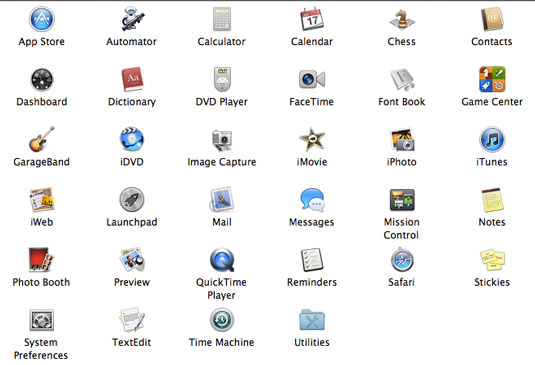
For instance, when you arrange by kind, which will gather all images together, apps together, and documents together, you can then use the Sort By option to have the items within each group sorted by name, date, and size. You can use them together to control the sorting order within an arrangement of items. The Arrange By option also interacts with the Sort By option. If deselected, the folder will open in whatever the previous view setting was.īrowse in icon view: When selected, the Finder will apply icon view to any subfolders within the current folder as you browse through them.Īrrange By: This dropdown menu lets you select the criteria by which to arrange items the options include by name, kind, and date. The View options window will open, displaying the various icon viewing options: (Icon view options allow you to customize many aspects of this popular Finder view.)Īlways open in icon view: When selected, the current folder will always open in icon view. To change the icon options, select View, Show View Options from the Finder menu bar, or press the Command + J keys. Icon viewing options are available whenever a Finder window is the front most active window, and the Finder window is set to Icon view. The icons can be plain default images supplied by the operating system, or custom icons created by an app developer or the end user to bring a bit of color and style to the desktop. Icon view is the default Finder view, and is characterized by the use of icons to represent the items contained within a folder, usually files and other folders although other item types could be present, such as various types of links. (You can select Icon view directly from the toolbar using the Icon view button outlined in red.) You can also select View, As Icons from the Finder menu bar. To set the current Finder window to display items as icons, select Icon from the window’s toolbar it’s the first button in the View section of the toolbar. In Customizing Finder Views: Part 2, we’ll look at the ins and outs of Column and Cover Flow views. We’ll start with Icon and List view, two of the most often used views. In these two guides, we’re going to look at each of the four viewing options: Icon, List, Column, and Cover Flow the viewing options that are available for each view, and some of the quirks and characteristics of each. To help us easily find, access, and organize our files, the Finder offers four different methods of viewing the filing system.
It allows us to easily see and work with the hierarchical organizational structure inherent in our Macs. For example, while Dropbox offers access to settings from its app, there’s no way to pause or resume sync, or to see what’s syncing without the menu bar extra.The Finder is the operating system’s default file manager for viewing and working with the Mac’s filing system. However, some apps don’t let you do this there would be no other way of accessing settings or features. Many of them can be removed, usually from a check box in the preferences or settings.

For third-party items, you’ll need to check the apps that added the menu bar extras. (And you’ll be able to do this with third-party extras in macOS Sierra.)įor system items, just press Command and drag a menu bar extra away from the menu bar to remove it. You can change the position of any third-party menu bar extra by pressing the Command key, clicking it, and dragging it to a new location. Menu bar extras are in two groups: third-party items at the left, system items at the right. Next come system menu bar extras: Messages, Wi-Fi, Eject, Time Machine, Volume, Bluetooth, Input, User, Spotlight, Notification Center.

Here’s what’s in my menu bar, from left to right: Dropbox, Airfoil Satellite, TypeIt4Me, Bus圜al, BitTorrent Sync, HazeOver, Moom, f.lux, Evernote, Plex, then a group of status menu bar extras from iStat Menus.


 0 kommentar(er)
0 kommentar(er)
